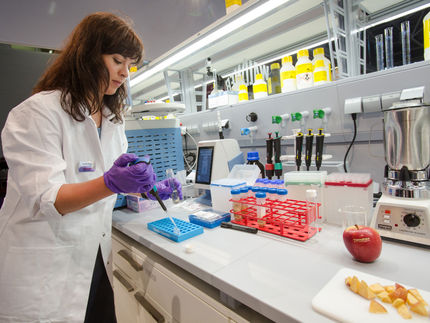Detecting small metallic contaminants in food via magnetization
A practical metallic-contaminant detecting system using three high-Tc RF superconducting quantum interference devices (SQUIDs)
The detection of metallic contaminants in foods is important for our health and safety. However, existing inspection methods have limitations. For instance, the X-ray radiation method cannot detect contaminants with sizes smaller than 1 mm with current practical X-ray levels, and it cannot be applied for the inspection of foods that have lactic acid bacteria because X-ray radiation causes ionization of such foods.
In this context, recently, researchers at the Department of Environmental and Life Sciences at Toyohashi Tech have developed a practical magnetic metallic contaminant detector using three high-Tc RF superconducting quantum interference devices (SQUIDs) for food inspection.
The detection technique is based on recording the remnant magnetic field of a contaminant using SQUID sensors. SQUID is a high-sensitivity magnetic sensor based on the superconductivity phenomenon.
In the process, a strong magnetic field is applied to food to magnetize the metal fragments inside, and subsequently, these metals, if they are contained in the food, can be detected by sensing their magnetic fields using SQUID sensors. This method is advantageous in the sense that it is both safe and provides a high resolution.
Professor Tanaka, whose team has developed the method, says, "We have developed an inspection system that permits contaminant detection in a food package with a height of 100 mm with three high-Tc RF SQUIDs. To accurately detect even smaller metallic fragments, digital filters have also been used to improve the signal-to-noise ratio. The target size of the metallic contaminant in food with a stand-off distance of 100 mm is 0.5 mm."
He continued, "To reduce the impact of noise as much as possible, the sensor is placed inside a square metallic box designed such that food can be tested as it passes through this box. The box is made of 2-mm iron-nickel alloy plates. Magnetic fields have strong affinities to this iron-nickel alloy. Thus, magnetic fields around the sensor are concentrated in the walls of this box."
In experiments, the developed system was able to clearly detect a steel ball with a diameter as small as 0.3 mm. The system was robust and not affected by electromagnetic waves from nearby mobile phones or from the motion of nearby steel objects. Therefore, the system is a promising tool to detect contaminants in practical situations, and it can significantly aid in enhancing consumer health and safety.
Original publication
S. Tanaka, T. Ohtani, Y. Narita, Y. Hatsukade, and S. Suzuki, "Development of metallic contaminant detection system using RF High-Tc SQUIDs for food inspection," IEEE Trans. Appl. Supercond. Vol. 25, no. 3, 2015.
Most read news
Original publication
S. Tanaka, T. Ohtani, Y. Narita, Y. Hatsukade, and S. Suzuki, "Development of metallic contaminant detection system using RF High-Tc SQUIDs for food inspection," IEEE Trans. Appl. Supercond. Vol. 25, no. 3, 2015.
Organizations
Other news from the department science

Get the analytics and lab tech industry in your inbox
From now on, don't miss a thing: Our newsletter for analytics and lab technology brings you up to date every Tuesday. The latest industry news, product highlights and innovations - compact and easy to understand in your inbox. Researched by us so you don't have to.




![[Fe]-hydrogenase catalysis visualized using para-hydrogen-enhanced nuclear magnetic resonance spectroscopy](https://img.chemie.de/Portal/News/675fd46b9b54f_sBuG8s4sS.png?tr=w-712,h-534,cm-extract,x-0,y-16:n-xl)



















































